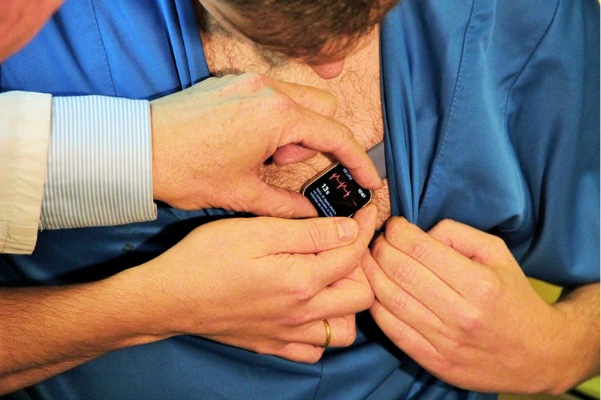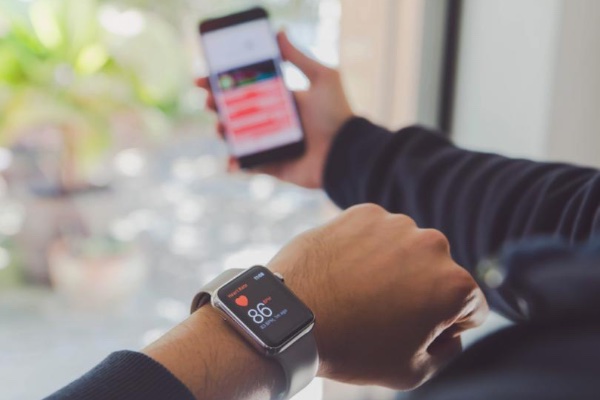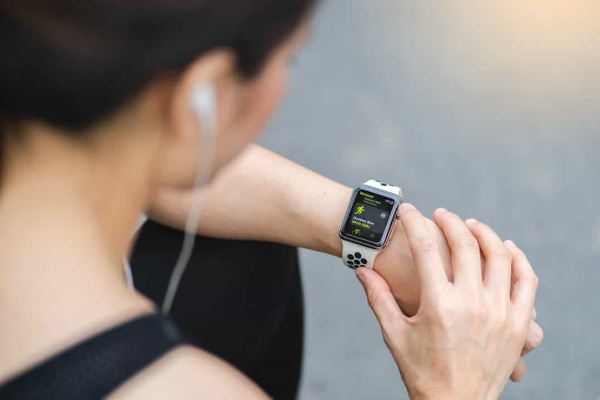ISABEL RUBIO ARROYO | Tungsteno
Jorge Cox, 22, discovered that he was suffering from heart disease when his smartwatch showed his resting pulse to be 130 beats per minute. This is just one of many examples of the potential of smartwatches for the early detection of health problems. The monitoring of parameters such as heart rate, blood oxygen levels, sleep, and functions such as fall detection have the potential to save lives. Although today these devices are not medical products, they can be an effective tool for staying healthy and for public health.
In fact, 25% of adults currently own such a device, according to the report The future of devices published in 2020 by GSMA Intelligence. With increasing levels of adoption of smartwatches and fitness trackers in recent months, smartwatches could become key tools for the detection of illness, especially in health crises such as the coronavirus.
Can a smartwatch detect the coronavirus?
More and more smartwatches can, in theory, measure the level of oxygen in the blood, i.e. the percentage of oxygen present in the red blood cells that travel from the lungs to the rest of the body. Devices such as the Apple Watch Series 6, the Amazfit GTS 2, the Fitbit Sense or the Samsung Galaxy Watch 3 promise to be able to measure this parameter, which is used to detect respiratory problems such as pneumonia—associated with COVID-19—or sleep apnoea.
A blood oxygen level above 95% is generally considered OK and anything below that level could indicate a problem, according to Apple. But the Cupertino company acknowledges that "even under ideal conditions, your Apple Watch may not always get a reliable blood oxygen reading." Factors such as skin perfusion (the amount of blood flowing through the skin), tattoos, movement or heart rate could affect the measurement. Therefore, these results are not normally intended for medical use.

New features such as electrocardiograms or blood glucose monitoring are promising for the detection of diseases. Credit: Carlos González.
Doctor on the wrist
Researchers at GSMA Intelligence say that wearables have the potential to reduce in-person visits to medical centres or hospitals. In fact, 89% of users are very keen to share data from their wearables with their doctor, according to a report by Accenture. There are already T-shirts that correct posture, pyjamas that can track breathing and bibs to monitor people with heart problems. These are alongside smartwatches and sports wristbands that assess day-to-day sleep quality, track exercise, send alerts if one is inactive for too long and measure heart rate.
These devices can be very useful in detecting arrhythmias or coronary heart disease. Cardiologist Miguel Ángel Cobos knows this well. After giving his wife an Apple Watch, he discovered how to perform a complete electrocardiogram in two minutes by placing the watch on different parts of the body. At the moment, there is little point in doing the test if it cannot be interpreted by a healthcare professional. But Cobos is confident that there will soon be an artificial intelligence system capable of analysing the information.
From measuring blood glucose to detecting falls
Currently, this type of device makes all kinds of measurements thanks to sensors and lights that take data from our blood flow, our position and whether we are moving or not, functionalities that the big tech firms are trying to enrich with new ones focused on health. In fact, some unofficial reports indicate that Apple and Samsung are already working to enable their watches to measure blood sugar levels. This function would be particularly useful, for example, for people with diabetes, as they have to check their blood glucose levels frequently, but also to monitor excess glucose in the blood, which can damage the eyes, kidneys and nerves.
Beyond these indicators, some sensors included in watches such as the Amazfit Bip 2 or the Apple Watch go one step further and are able to detect sudden movements and falls. If the wearer suffers a "hard fall" while wearing it, the watch sounds an alarm and asks the wearer to confirm that they are okay. If no response is received and the wearer remains motionless for about a minute, it automatically calls emergency services. This feature can be particularly useful in the older population, as evidenced by the case of 92-year-old Jim Salsman, a farmer from Nebraska who, thanks to the Apple Watch's fall detection system, was quickly attended to by emergency services after falling down a ladder while doing maintenance work on his rooftop.

Although the data offered by these devices and apps is not intended for medical use, in the future the collection of this information could anticipate epidemics such as the coronavirus. Credit: Wikimedia Commons.
While smartwatches have already saved lives, it should not be forgotten that they are not yet considered health products and the data should not be used for self-diagnosis. Nevertheless, some studies highlight the usefulness of these devices not only for the individual, but collectively and for public health. This opens the door to wide-ranging possibilities. Indeed, a paper published in the Journal of Medical Internet Research notes that heart rate variability detected with a common smartwatch could be used to predict coronavirus infection.
Predicting future pandemics could be one of the most valuable functionalities of these devices. This is already being explored by researchers at the Scripps Translational Research Institute, who began a study in March 2020 to evaluate data shared by thousands of smartwatch users as part of a programme to improve the detection and containment of infectious disease outbreaks. In a paper published in Nature, they indicate that devices such as Fitbit can help identify cases of COVID-19 by assessing changes in heart rate, sleep and activity levels.
Data from millions of users could, therefore, be used by governments and health agencies to detect new outbreaks and set strategies to curb the spread of the pandemic. Already, hospitals around the world, tech giants and startups are using technology to shift from treating diseases to trying to prevent their onset. Smartwatches, along with other wearables and artificial intelligence systems, could lead to significant savings for the healthcare system in this area by improving disease prevention, diagnosis and treatment.
· — —
Tungsteno is a journalism laboratory to scan the essence of innovation. Devised by Materia Publicaciones Científicas for Sacyr’s blog.
